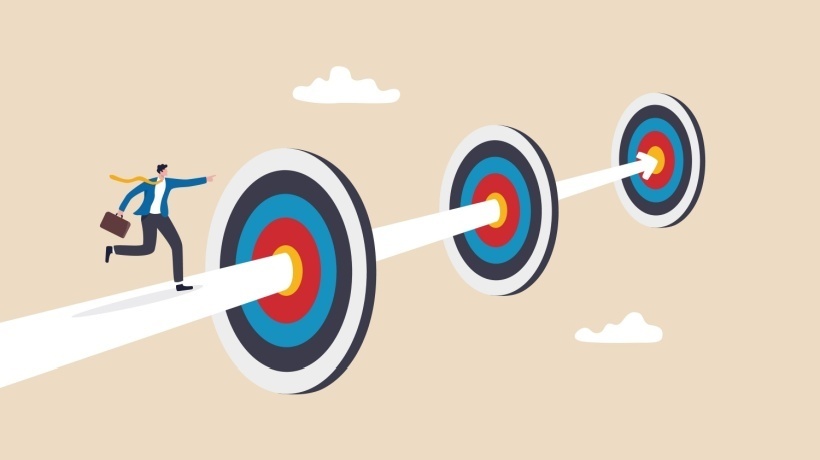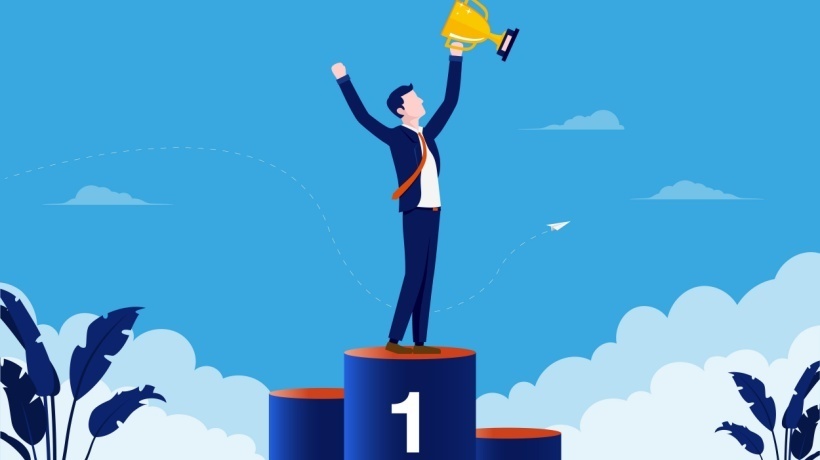Employee Goal Setting As A Career Development Strategy
How To Facilitate Employee Goal Setting
Did you know that learners who set career goals engage with learning 4x more than those who don’t set goals? If you want to help your employees develop their careers, goal-setting should be your starting line. When that pistol is fired, and the race kicks off, you want your employees to know exactly where they’re heading, what hurdles they might encounter, how to tap into their motivation when their focus lags, and how their accomplishment can impact their future.
Does Your L&D Strategy Need Some Improvement?
Setting clear, achievable goals allows employees to envision their career trajectory, identifying the skills and knowledge they need to progress. This foresight is invaluable, not just for the individual’s professional development but also for aligning their aspirations with the strategic objectives of your organization.
When relevant, timely goals are established, employees embark on a structured path of learning, equipped with milestones that celebrate their progress and recalibrate their focus as needed. This thoughtful approach ensures that learning is not sporadic or unguided, but is instead a deliberate effort toward achieving predefined outcomes. It also creates a feedback loop where employees can assess their growth, reflect on their learning journey, and adjust their goals to meet changing demands or personal ambitions.
It makes sense, then, that employees who see a clear linkage between their professional growth and their day-to-day work are more likely to be engaged and committed to their learning journey. They understand that their personal and professional development is valued, fostering a sense of loyalty and belonging. And that’s what it takes to bring home the gold!
Top Ways To Elevate Your Career Development Strategy
1. Avoid A False Start: Don’t Get Tripped Up By Misconceptions
Every runner has their own reasons for pushing past their mental barriers and physical limitations. Visualizing those motivations can be a powerful tool to keep the momentum going. As an organization, you might have a strong learning culture in place and development opportunities aplenty, but if they’re not in alignment with your employees’ personal goals, you won’t see the results you’re expecting. LinkedIn’s Workplace Learning Report revealed the three top reasons that employees are motivated to spend more time learning in 2024:
- If it helps to make progress towards career goals
- If it helps to stay up-to-date in the field
- If it is personalized for interests and career goals
Familiarizing yourself with your employees’ career goals and personal interests can help you avoid being penalized for a false start, when all your hard work falls flat because it doesn’t speak to the motivations your learners identify with. Make minor tweaks to tailor your career development opportunities to your unique learners and you won’t get tripped up by a less than enthusiastic response!
2. Lap The Competition: Get Ahead With Agility
When you lap the competition, you get to take in the view from the front of the pack. To make this shift into top gear, it’s essential to adopt a more holistic view of career development. This means providing opportunities for continuous learning and professional development that are aligned with the individual’s career aspirations, as we described above, as well as the company’s panoptic goals. How? Leverage the power of agility…in everything. Your approach, your leadership training, your development opportunities, your flexibility policies. Everything. Here’s what staying ahead of the curve with an agile strategy looks like:
- Offering a variety of learning formats, such as workshops, seminars, mentorship programs, and online courses, to cater to diverse learning preferences and schedules
- Encouraging experimentation, allowing for failure, and celebrating curiosity
- Going beyond sporadic training sessions and integrating learning into the very fabric of your company
- Creating space for knowledge sharing among employees, recognizing learning achievements, and providing time and resources for learning activities that are relevant and valuable
By incorporating these tenants into your L&D strategy, you develop employees that are adaptable and able to handle shifting expectations, work environments, and skill requirements. As each new career advancement milestone is met, your learners become more committed to an innovative mindset, strengthen their emotional capacity to cope with change, and build the necessary resilience to respond to challenging situations with solutions.
3. Sprint At Full Speed: Leverage The Power Of Personalized Learning
Just like no Olympic runner would be trained in the same exact way as their teammate, a one-size-fits-all approach for employee training programs is sure to produce lackluster results. Too much strain in one area could lead to injury while failing to provide a challenge could lead to boredom and disengagement. The rising workforce is diverse, comprising individuals with varying career aspirations, learning styles, and capabilities.
Personalized career pathways are a key element of effective career development strategies. By using data analytics, L&D teams can gain insights into the skills and competencies their employees need to develop and offer targeted training opportunities that are both relevant and engaging. Once you have a clear picture of your employees’ personal career goals and aspirations, and an understanding of how those goals align with your company’s bottom line, you can produce actionable steps to achieve them. These actionable steps could include:
- Rotational assignments, cross-functional projects, or leadership training programs
- Regular career discussions between employees and their managers should be encouraged to ensure alignment and to adjust plans as needed
- Mentorship programs and support networks that connect employees with mentors, coaches, or peers who can guide them through their personalized career pathways
By investing in employee career development, you not only enhance job satisfaction and employee retention but also build a resilient and agile workforce, ready to meet the challenges of tomorrow.
Editor’s Note: Check out our directory to find, choose, and compare eLearning Industry’s Top Employee Engagement Software.














Post Comment